Cryptantha barbigera, Bearded Cryptantha
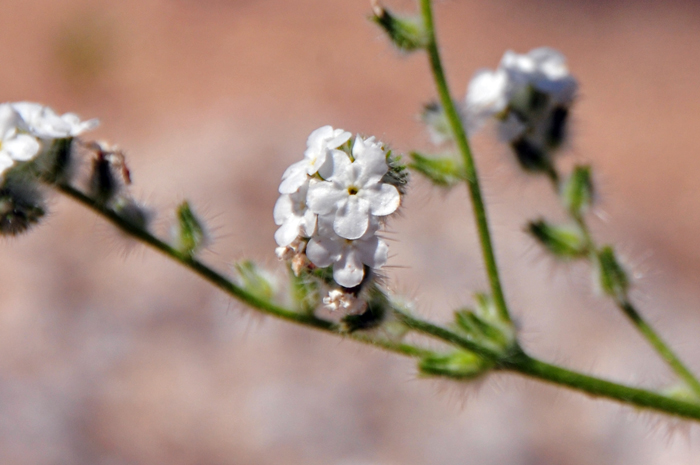
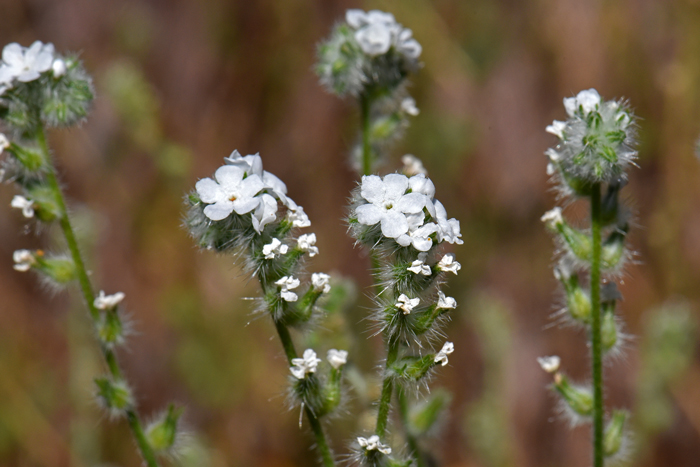
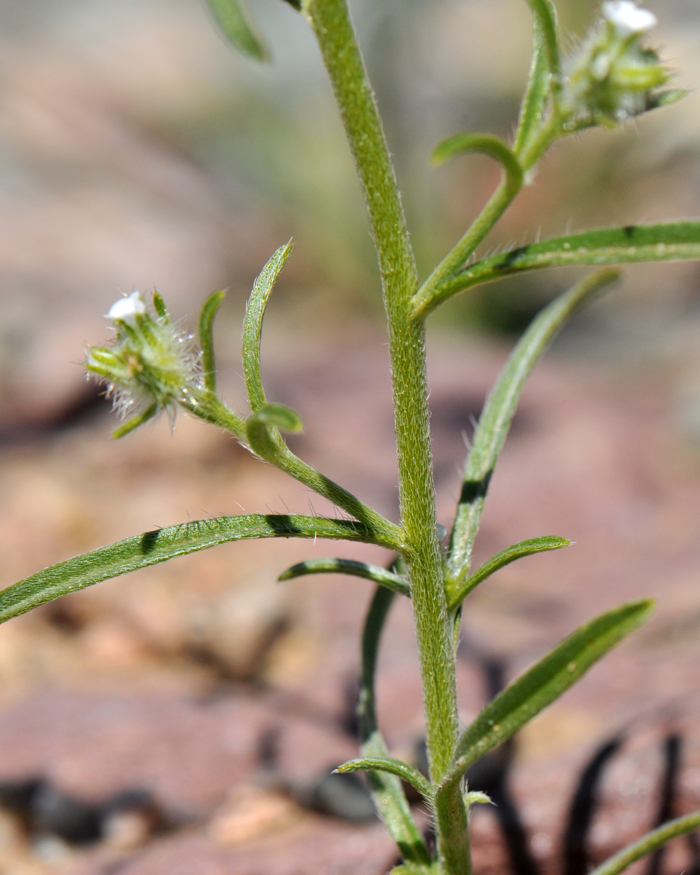
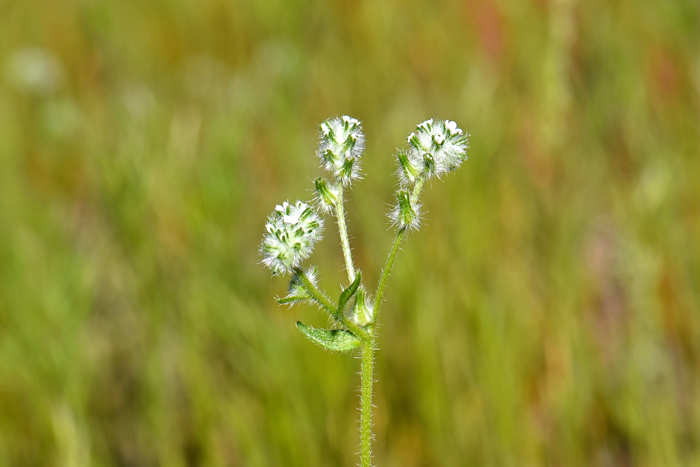
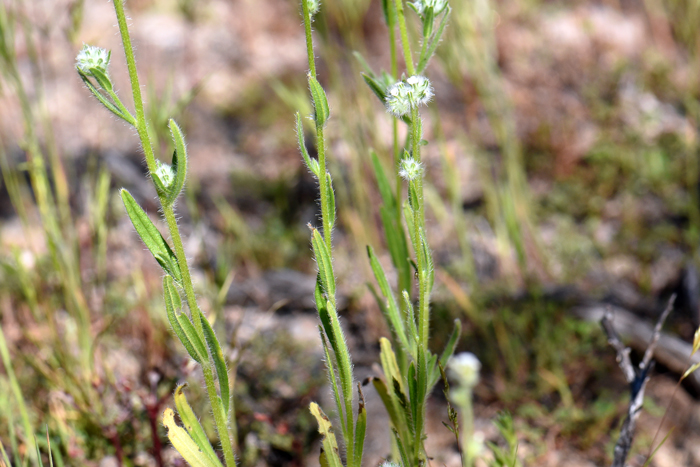
Scientific Name: Cryptantha barbigera
Common Name: Bearded Cryptantha
Also Called: Bearded Cat's-Eye, Bearded Catseye, Narrowleaf Nievitas; (Spanish: Peluda)
Family: Boraginaceae, Forget-Me-Not Family
Synonyms: (Krynitzkia mixta)
Status: Native
Duration: Annual
Size: 4 to 12 inches (10-30 cm) tall (up to 20 inches (50 cm).
Growth Form: Forb/herb; stems 1 or few; erect slender stout plants, branched at the base and above, branches ascending, plants white-hairy, foliage hair rough, longish (hirsute).
Leaves: Green; leaves generally alternate along stems, .5 to 2 inches (1-5 cm) long; leaves (sessile); shape mostly linear or blunt-lanceolate, leaves blunt or rounded (obtuse ) at the tips; white straight stiff hairs (bristles) spreading, small bulbous base.
Flower Color: White, flowers in spikes curved like a scorpions tail (scorpioid), about 6 inches (15 cm) long and usually paired at the ends of the branches, plants with numerous white stiff hairs (bristles at the base of the flower; calyx lobes linear-lanceolate, about 4 to 10 mm long and constricted above the nutlet; fruit is a nutlet.
Flowering Season: February or March to May or June
Elevation: Below 5,000 feet (1,524 m).
Habitat Preferences: Common in desert areas, sandy areas, along arroyos and on hillsides and rocky areas.
Recorded Range: Bearded Cryptantha is found in the southwestern United States primarily in; AZ, CA and NV and also in southwest NM, southwest UT and extreme west Texas. It is also Native to northwest Mexico and northern Baja California.
North America & US County Distribution Map for Cryptantha barbigera.
U.S. Weed Information: No information available.
Invasive/Noxious Weed Information: No information available.
Wetland Indicator: No information available.
Threatened/Endangered Information: No information available.
In the Southwestern United States: Arizona has 37 species of genus, California has 60 species, Nevada has 44 species, New Mexico has 23 species, Texas has 15 species, Utah has 55 species. All data approximate and subject to revision.
The genus Cryptantha was published by Johann Georg Christian Lehmann in 1837.
There are 2 varieties Cryptantha barbigera (AZ, CA, NM, NV, TX, UT);
Cryptantha barbigera var. barbigera, Bearded Cryptantha (CA, NM, UT, Baja California);
Cryptantha barbigera var. fergusoniae, Palm Springs Cryptantha (AZ, CA).
Cryptantha species have typically white flowers in spikes like a scorpions (scorpioid) tail. They are often difficult to identify in the field or lab and a close examination (10x loupe or dissecting scope) of the flowers and the small seeds or nutlets is usually required. Bearded Cryptantha however is a little easier to identify in the field as it is generally an erect and slender plant covered in dense stiff hairs (bristles) and linear or blunt-lanceolate leaves, blunt or rounded (obtuse) at the tips.
Bearded Cryptantha is similar looking to Nevada Cryptantha, Cryptantha nevadensis whose branches are more flexuous and less stout that Bearded Cryptantha. Also Bearded Cryptantha has horizontal extending hairs (spreading).
The type species species (Krynitzkia mixta) is from the Mescal Mountains (Jones), southern Gila County, Arizona.
In Southwest Desert Flora also see: Gander's Cryptantha, Cryptantha ganderi, Narrowstem Cryptantha, Cryptantha gracilis, Panamint Cryptantha, Johnsonella angustifolia (Cryptantha), Redroot Cryptantha, Cryptantha micrantha, Torrey's Cryptantha, Cryptantha torreyana, and Wingnut Cryptantha, Cryptantha pterocarya.
The species epithet "barbigera" (barbig'er/barbig'era/barbig'erum:) means bearded, a reference to the visible stiff bristles.

